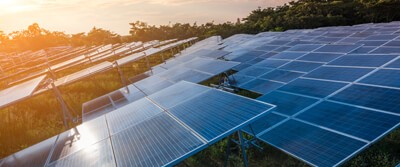Green Plants Inspire Better Solar Cells

By Mike Howie
Solar energy is one of the most commonly talked about and frequently used alternatives to traditional energy sources like coal and oil. While it’s not nearly as prevalent as the other two, solar energy use is becoming more and more popular, growing 20 percent per year over the past 15 years. Today, the photovoltaic cells that are used to collect solar energy are used on everything from the International Space Station to cheap handheld calculators.
Despite their growing popularity and the promise of clean, sustainable energy, our current solar cells are far from perfect: the most affordable ones are only 20 percent efficient. That poor performance is the result of fluctuations in the amount of energy being emitted by the sun. If the panel absorbs too much energy it can be damaged, so conventional panels use voltage converters and feedback controllers to suppress fluctuations. This waste of energy is part of what prevents more people from using solar panels as a main source of energy.
Natural Inspiration
Green plants, on the other hand, are very good at absorbing the fluctuating energy from the sun and using it to photosynthesize their food. Nathan Gabor, a physicist at the University of California, Riverside, discovered why this is when he and his team used the photosynthetic success of green plants as a guiding fact in their quest to create better solar cells.
The team came up with a new quantum heat engine photocell that incorporates two photon-absorbing channels: one that absorbs high-power wavelengths and one that absorbs low-power wavelengths. The cell switches between the two channels to accommodate varying levels of solar input, and by doing so provides a steady output without needing active feedback or adaptive control mechanisms.
In testing their new cell, Gabor and team found that green light doesn’t help regulate the amount of energy being absorbed, so they tweaked their cell to reject it completely. Their discovery suggests that plants regulate solar energy in the same way, reflecting green light and therefore taking on a green coloration. In the end, the team not only created a better, more efficient solar cell, but they also made an interesting connection between quantum mechanical structure and the plants in your backyard.
Discussion Questions
- Where have you seen solar panels being used?
- What else could affect how well solar panels work?
- Photovoltaic Cell
- Photosynthesis
- Quantum